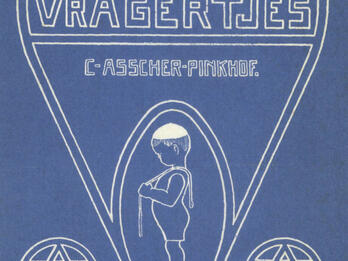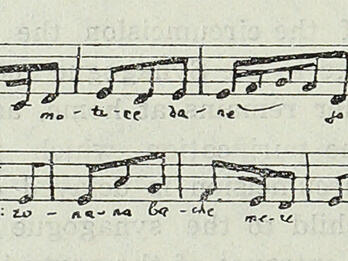Secular Currents in the Synagogal Chant in America
The distinction between religious and secular music is not universally admitted. There is a considerable group of people, some of them very learned in the art and science of sound, who claim that music per se is one and indivisible, either good or bad, grammatically correct or wrong, and that the colored moods or feelings we experience at a recital are simply due to association of ideas. Thus a chant or anthem becomes to us a sacred composition because we hear them in a cathedral or synagogue instead of a music-hall or theatre. The world-renowned Miserere given in the Sistine Chapel at Rome during the Holy Week is used as an illustration. This famous performance, over which tourists enthuse and rave ad extremum, when noted down and analyzed away from the cathedral atmosphere, as was done surreptitiously by Mozart, proves to be prosaic and simple to a marked degree. They also cite instances of sacred oratorios, like Handel’s Esther and Mendelssohn’s Elijah, being offered on the operatic stage and evoking feelings quite contrary to those evoked within the cold Gothic walls of the oratory. That there is a modicum of truth in this assertion is evident to everyone conversant with the influence of environment on such a sentient being as man. Indeed, even apart from this, it must be admitted that what we generally characterize as holy and secular melodies are not so far apart as we are prone to think. They often merge together so that we are not able to distinguish their line of demarcation. Nevertheless, the division of music into religious and secular is legitimate, and is justified not alone by time-honored usage but also by essentially differing characteristics which serve as criteria for the determination of the artistic status of a certain melody. [ . . . ]
Under the conditions of flux and reflux, of continuous immigration and emigration, in which the Jews henceforth found themselves, it was inevitable that even their closely guarded and strictly observed chant should be affected by current popular melodies. As a matter of fact, it can be maintained with a considerable degree of certainty that the synagogal chant was never absolutely pure and uncontaminated, that there was always some leaven of folksong mixed with the pabulum of the hymn. But with the supremacy of ecclesiastical over secular music until the end of the Middle Ages this admixture was not noticeable, being of a negligible quantity, and therefore enjoying the connivance of the clergy. It was only during the Renaissance, when popular got the ascendancy over ecclesiastical music, that the contamination of the chant began to grow apace. [ . . . ] The Jews, without even a hierarchy to restrain them, proved excellent imitators in this attractive and seducing practice. As an authority upon the subject expresses it very succinctly: “Beginning with the sixteenth century it became a frequent practice with Ashkenazim as well as Sephardim, to adopt melodies foreign to the synagogue, and to liberally reproduce there the folk-songs of the country. Many Hazanim would themselves compose melodies for the service, but these would be influenced rather by the popular music of the day than by the Jewish spirit of the older tunes. The larger number of the tunes henceforward introduced bear plain token of their outside origin, to which indeed many of them are plainly traceable. Such are the synagogal hymns for Sabbath, and for Hanukah and similar occasions, the larger portion of the melodies which characterize the three festivals, together with nearly all, if not quite all, of the hymns for singing in the home circle, according to the good old Jewish custom. Most of this adopted music is of a jingling prettiness; some little of it, however, well worth preservation.” (Francis L. Cohen, Public. Anglo-Jewish Hist. Exhib. 1, 127; comp. also Low, Lebensalter, p. 313).
[Within this] subject of secularization [ . . . ] [c]orresponding to the three great classes of Jewish population in America, viz. the Spanish, the German and the Russian-Polish Jews, we can diagnose three distinct tendencies in the treatment of synagogue music: the Sephardim retain their love for Moorish and generally Oriental folk tunes, the Ashkenazim indulge in operatic airs and oratorio themes, while the Russian-Polish Jews, in addition to their love for Slav and generally Eastern European melodies, imitate everything melodious in the musical register. Some of these tendencies manifested themselves already in the Middle Ages, but they became accentuated with the advance of time and the consequent evolution of new musical forms. With the immigration of the Jews to the new continent these practices were transplanted here and continued their undisturbed development.
Credits
Published in: The Posen Library of Jewish Culture and Civilization, vol. 7.




